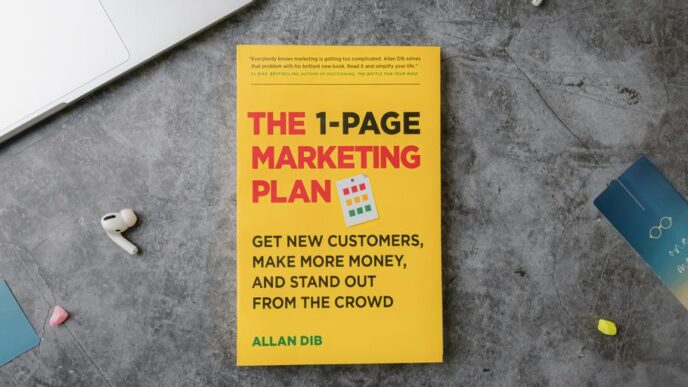In New York’s fast-paced and competitive business environment, having a great product or service isn’t enough to get noticed. You need a solid content marketing strategy that not only reaches but also resonates with your audience. For small businesses and startups with tight budgets, this might seem challenging. But the good news is that there are plenty of free and affordable tech tools that can help you develop and implement an effective content marketing plan without draining your resources.
Why Content Marketing Matters
Let’s talk about why content marketing is so important before we get into the tools, especially in a city like New York. information marketing is creating quality and relevant information that truly captures and holds the interest of your audience, going beyond typical advertising. Driving actions that matter is ultimately what matters, whether that is encouraging someone to buy from you, subscribe to your email, or just learn more about your business.
Because of its diverse population, sectors, and cultures, New York is an ideal location for content marketing. A well-thought-out content strategy may establish your company as a leader in your industry, increase brand recognition, and foster strong client loyalty.
Laying the Groundwork: Goals and Audience
Before you start using any tools, it’s crucial to lay a strong foundation for your content marketing strategy. Start by setting clear, measurable goals. Are you looking to increase website traffic, generate leads, or boost engagement on social media? Your goals will guide everything from the content you create to how you distribute it.
Next, get to know your audience. In a city as diverse as New York, your audience could be vastly different based on age, income, location, or interests. Free tools like Google Analytics can help you analyze your current audience data so you can better understand who they are, what they want, and how to reach them effectively.
Creating Content: Tools to Bring Your Ideas to Life
With your goals set and audience defined, it’s time to create content. Whether it’s blog posts, videos, infographics, or social media updates, here are some free and low-cost tools that can help:
Canva: Canva is an easy-to-use graphic design tool that lets you create stunning visuals without needing advanced design skills. With a variety of templates for everything from social media posts to infographics, Canva’s free version is more than enough for most small businesses.
Grammarly: Grammarly is an AI-powered writing assistant that helps ensure your content is clear, engaging, and free of grammar mistakes. The free version is great for basic proofreading, while the premium version offers extra features like tone adjustment and plagiarism checks.
Trello: Trello is a project management tool that helps you organize your content ideas and plan your editorial calendar. You can create boards for different content types, set deadlines, and collaborate with team members. The free version works well for most small teams.
GIMP: GIMP is a free, open-source alternative to Adobe Photoshop. It’s powerful enough for professional-grade image editing, making it perfect for businesses that need high-quality visual content on a budget.
Getting Your Content Out There
Producing content is only the first step; in order to reach your target audience, you also need to distribute it successfully. The following resources can assist you in expanding the audience for your content:
Buffer: Buffer is a social media management application that lets you plan posts for Instagram, LinkedIn, Facebook, Twitter, and other networks. You may schedule ten posts for each of your three social media accounts and manage them using the free version, which will help you keep up a steady online presence.
Mailchimp: One of the best methods to interact with your audience is still through email marketing. Sending up to 10,000 emails a month to 2,000 subscribers is possible with Mailchimp’s free plan, which makes it a great choice for small businesses trying to grow their email lists.
Another social media management application is Hootsuite, which has more sophisticated capabilities like social listening and analytics. Even though the free plan has some restrictions, it’s a good place to start for companies that run several social media profiles.
WordPress: WordPress is a must-have if you plan to use blogging as part of your content marketing strategy. It’s an SEO-friendly, highly-customizable, free, open-source platform with thousands of themes and plugins to improve the functionality of your blog.
Optimizing Your Content for Search
SEO is crucial for ensuring your content gets found by your audience. Without it, even the best content can go unnoticed. Here are some tools to help you optimize your content for search engines:
Google Keyword Planner: This free tool from Google helps you find relevant keywords to target in your content, improving your search engine rankings and attracting more organic traffic.
Yoast SEO: If you’re using WordPress, Yoast SEO is an essential plugin for optimizing your posts and pages. The free version offers keyword optimization, readability analysis, and XML sitemaps, making sure your content is search-engine-friendly.
Ubersuggest: Ubersuggest is a free SEO tool that provides keyword suggestions, backlink analysis, and content ideas, making it a great resource for businesses looking to improve their SEO without spending a fortune.
Measuring Success
Monitoring your results is crucial for refining your content marketing strategy. These are a few useful tools:
Google Monitoring You may get detailed insights on your website traffic with this effective, free tool. It provides you with information about your website’s traffic source, user behavior, and top pages. This data is essential for determining what is effective and where changes are required.
Hotjar: This reasonably priced tool gives you a better insight of how people interact with your website by offering heatmaps, session records, and surveys. The qualitative information complements the numerical data that you obtain from Google Analytics.
Moz: Moz provides backlink monitoring, domain analysis, and keyword research in a free edition of their SEO tool. It’s an excellent tool for monitoring the SEO performance of your website over time.
Conclusion: Building Your Strategy on a Budget
You don’t have to spend a lot of money in New York to create a successful content marketing plan. You can create, distribute, and optimize content that truly engages your audience and boosts traffic, engagement, and conversions with the aid of a plethora of free and inexpensive digital tools.
Consistency is the key to success. Continue producing material that appeals to your readers, and utilize the aforementioned tools to streamline your workflow. Your content marketing plan will develop into a potent development engine over time, promoting the expansion of your company in the competitive business climate of New York.













